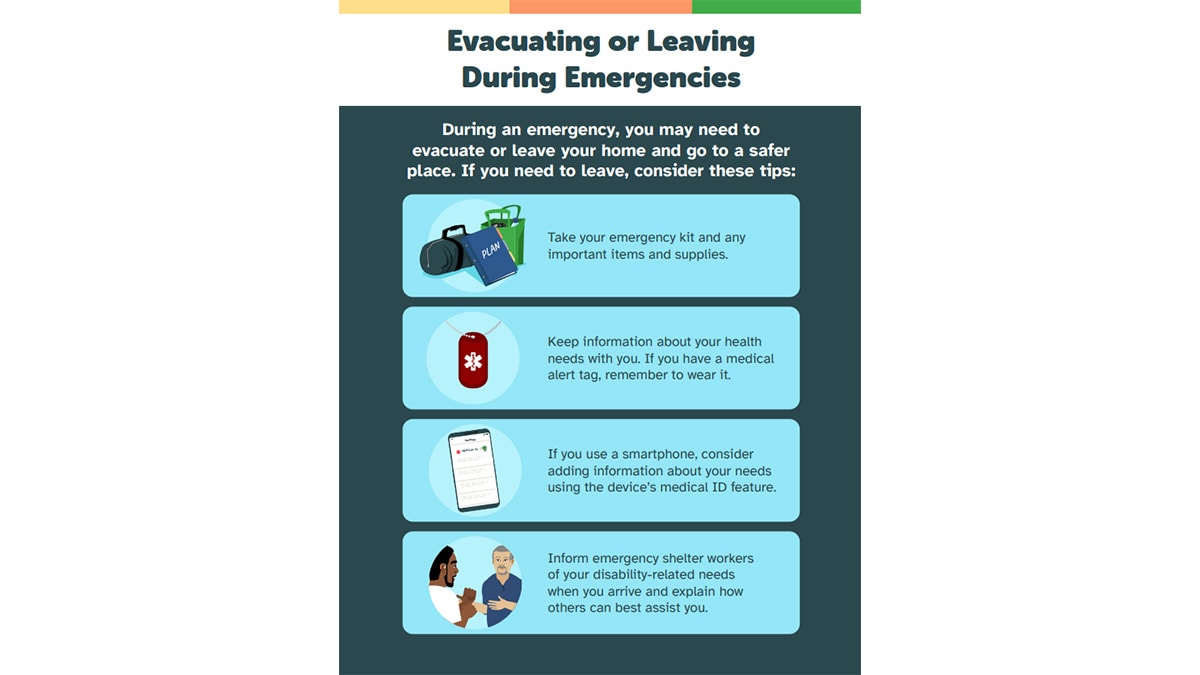What to know
During an emergency, you may have to evacuate from your home or another location. Your emergency plan should include what to do if you need to evacuate or go to a shelter during an emergency.

Tips to consider
If you need to evacuate or go to a shelter during an emergency, consider these tips:
- Keep information about your health needs with you during emergencies. If you wear a medical alert tag, make sure you have it on.
- Even if you plan for accessible transportation, it may not be available in an emergency. If you require accessible transportation in an emergency, contact your local paratransit service provider or local government services ahead of time to determine who provides emergency transportation in your area. The Federal Emergency Management Agency (FEMA) has a local emergency response resource locator by ZIP code.
- Inform shelter workers of your needs when arriving at an emergency shelter and explain how others can best assist you in the shelter. If you use a smart phone, consider adding information about your access and functional needs using the device's medical ID feature.
- Know your civil rights during emergencies. For example, know that shelters must be accessible for people with disabilities under the Americans with Disabilities Act (ADA).
What about service and emotional support animals?
Shelters must allow service animals by law. Under the ADA, service animals are limited to dogs and sometimes, miniature horses. To determine whether the animal is a service animal, the only two questions shelter staff can ask are the following:
- Do you require the animal because of a disability?
- What tasks does your animal perform for you?
Under the Fair Housing Amendments Act, disaster shelters are covered as a type of emergency shelter and are also required to allow emotional support animals that are not trained to perform a task. Keep this link on your phone or device.
Resources
Find a broad compilation of resources on emergency preparedness and response that can be filtered by audience and topic: Resources.




